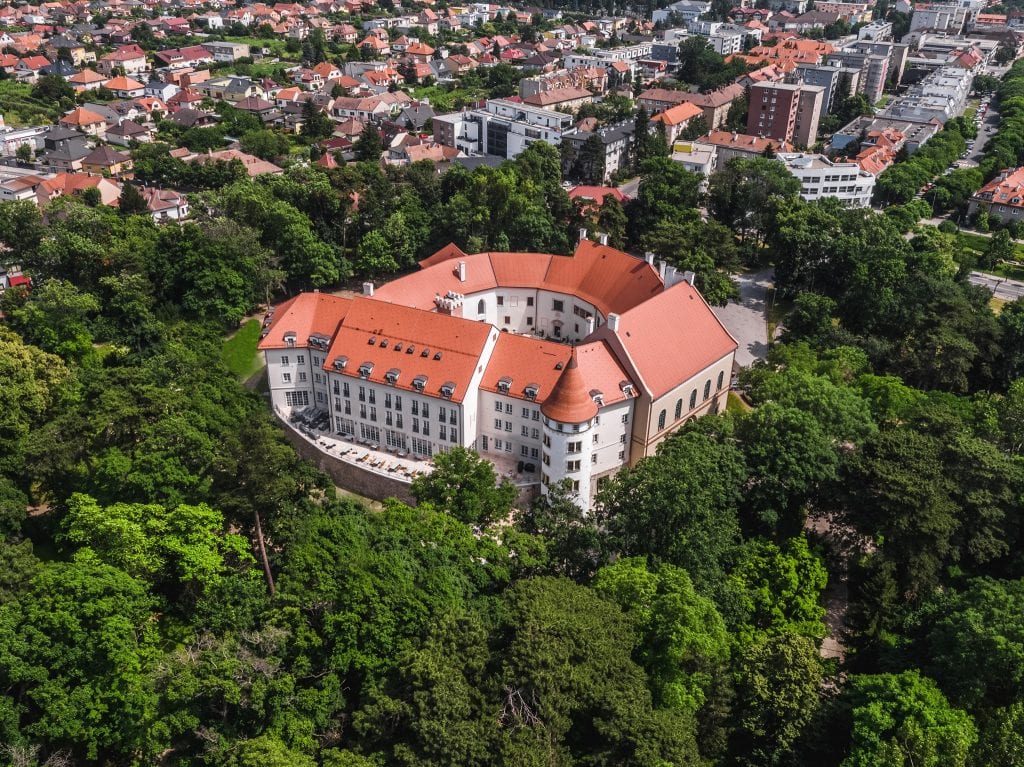Jochen Erler, who first reported on Slovakian wine in the mid-90s, reflects on the country’s wines after judging at the 2019 edition of Slovakia’s National Wine Competition, held in Pezinok.
Pezinok is a pleasant town in the foothills of the Little Carpathian mountain range, reflecting its Austro-Hungarian past in its architecture, and showing a lifestyle á la Vienna with cafés busy all day around. In its beautifully restored chateau, a team of 46 jury members, all from Slovakia with two exceptions, a Czech and myself, judged mostly white wines, as they represent about 85% of Slovakia’s wine production.
This event was the second stage of the competition, as only up to 400 samples out of some 7,000 make it from the first tasting. The best 100 wines are then added to the ‘National Collection of Wines’ hosted in the cellars of Chateau Pezinok.
Slovakian wines have not been terra incognita for me. As probably the first western wine writer after the fall of the Iron Curtain, I had visited both parts of the former CSSR in 1995, travelled even to its most eastern wine growing area, around Kosice, and wrote a report under the title ‘Ex oriente vinum’, published in Wine & Spirit International. Since then I had many stays in Slovakia at Piestany, one of the world’s best thermal spas, where I visited some of the nearby wineries. In the hotel, I consumed local wines.
One of the most intriguing Slovakian wines is its Tokaj. It carries a world-famous name, but only a few people know that this “Wine of the Kings, and King of the Wines” does not come exclusively from Hungary. To the ignorant people also belonged the technocrats in Brussels. They originally granted Hungary the exclusive right for the trademark ‘Tokaj’, not knowing that the northern part of Tokaj belongs to Slovakia.
The quality of Slovakian Tokaj was impacted under communist rule, the same as the Hungarian wine was: excellent in good years like 1983 and 1986, in the other years less convincing due to chaptalization. The Hungarians had even built a sugar refinery in the Tokaj region! After the fall of communism, privatisation took place and quality improved thanks to big investment, which in Hungary came mainly from abroad.
Another interesting feature of Slovakian wine is the creation of new crossings, not necessarily PIWIs (Fungus resistant grape varieties). A locally popular variety is the white grape Devin, which is of the Traminer family. I prefer the rare, less aromatic Milia, though it is rather low in acidity. This cultivar is the result of 40 years research by Ms. Pospisilova, who is now 90 years old. There are many other new crossings, grown only in Slovakia. At the most recent international PIWI contest in Germany, it was a Slovakian wine that obtained the highest points: 99 for the 2018 Göcseji Zamatos of Víno Hladký in the Little Carpathians.
Among the few reds in Slovakia, Alibernet is my favourite – a Ukrainian crossing of Alicante Bouschet and Cabernet Sauvignon. However, it has been seldom planted because of its late ripening, and I have found only one producer of this variety with consistently high quality – the Pavelka winery, near Pezinok. Hence, I was not surprised to find only one Alibernet on the 2019 list of the best 100 Slovak wines.
Photo of Chateau Pezinok

